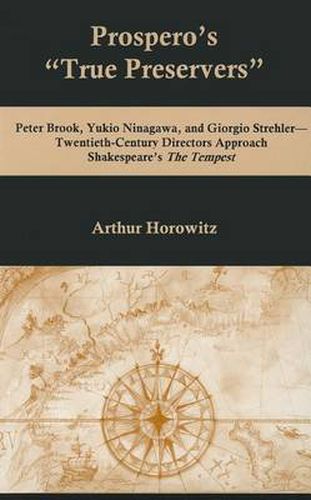Readings Newsletter
Become a Readings Member to make your shopping experience even easier.
Sign in or sign up for free!
You’re not far away from qualifying for FREE standard shipping within Australia
You’ve qualified for FREE standard shipping within Australia
The cart is loading…






This work explores how three great modern, international directors have adapted and applied African story-telling techniques, textual deconstruction, traditional Japanese art and theatrical forms, and Italian stage tradition to their productions of William Shakespeare’s great play, ,I>The Tempest. It is an analysis of how these directors’ approaches to this same canonical work have contributed to the development of the modern stage director and how the application of classical forms like commedia dell’ arte and No theater has informed the creation of a new performance vocabulary. At the same time, Prospero’s ‘True Preservers’ investigates the issue of post-colonial changes in the dynamics of the Prospero-Caliban relationship and how these three directors’ disparate interpretations of the incendiary confederacy has impacted upon the play’s contemporary performance history.
$9.00 standard shipping within Australia
FREE standard shipping within Australia for orders over $100.00
Express & International shipping calculated at checkout
This work explores how three great modern, international directors have adapted and applied African story-telling techniques, textual deconstruction, traditional Japanese art and theatrical forms, and Italian stage tradition to their productions of William Shakespeare’s great play, ,I>The Tempest. It is an analysis of how these directors’ approaches to this same canonical work have contributed to the development of the modern stage director and how the application of classical forms like commedia dell’ arte and No theater has informed the creation of a new performance vocabulary. At the same time, Prospero’s ‘True Preservers’ investigates the issue of post-colonial changes in the dynamics of the Prospero-Caliban relationship and how these three directors’ disparate interpretations of the incendiary confederacy has impacted upon the play’s contemporary performance history.